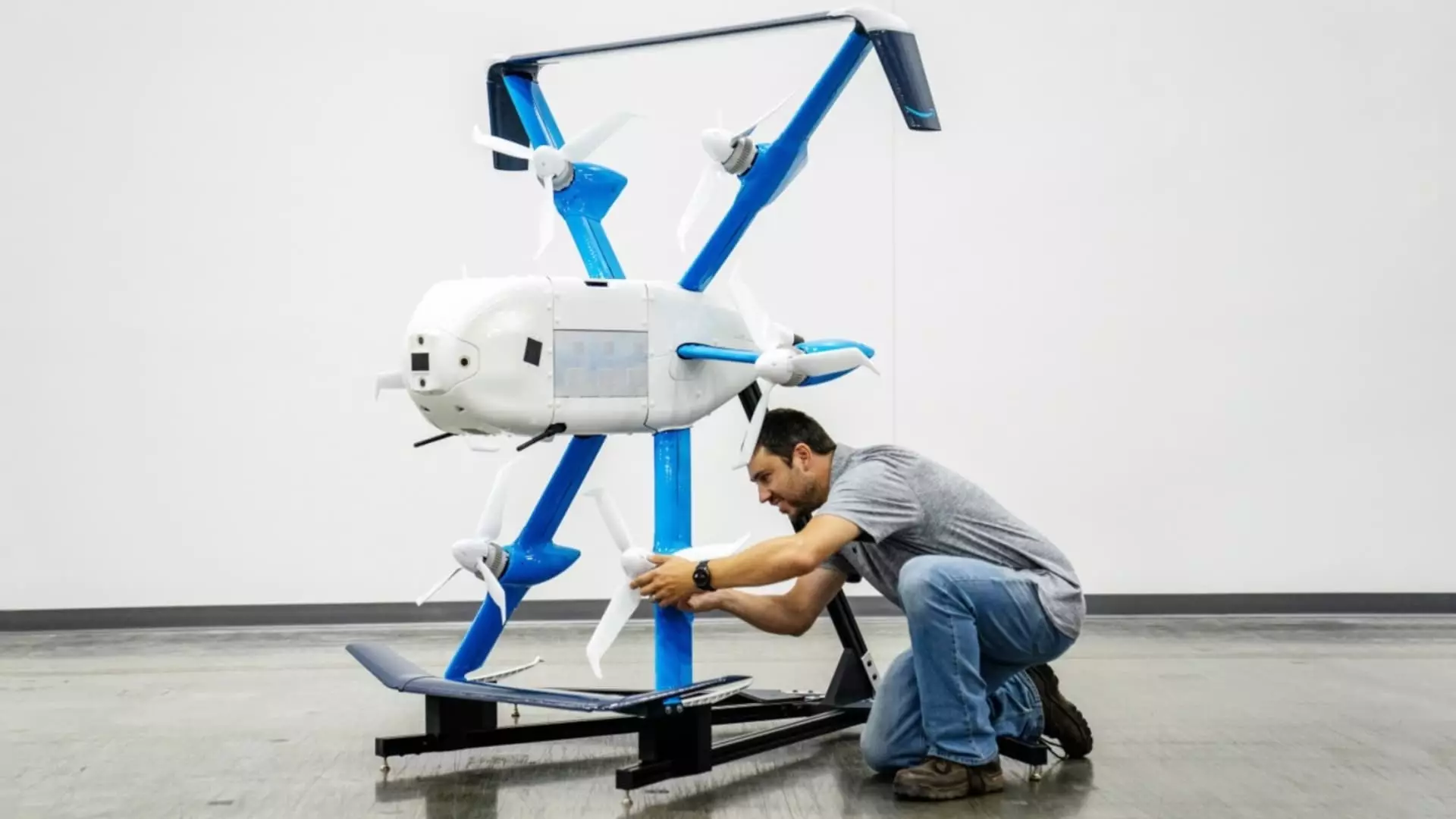After a brief hiatus, Amazon’s Prime Air drone delivery service is once again airborne, marking a significant moment for the tech giant amidst a sea of challenges. The resumption of services in College Station, Texas, and Tolleson, Arizona, comes after Amazon’s complex adjustments to their drone technology and an extensive regulatory review process. Originally suspended due to sensor-related concerns that were notably exacerbated by environmental factors like dust, Amazon’s decision to take a step back was strategic. It reflects the necessity of safety over expediency, a principle that, however, comes with its own set of implications for the future of aerial logistics.
When the drone system encountered anomalies in altitude readings, Amazon, in an admirable move, prioritized mitigating these risks over pushing forward with deliveries. Although the company assured that it never faced an actual safety crisis, the decision to pause operations revealed a commitment to operational integrity. By conducting a necessary comprehensive software update on the MK30 drone — which has since been approved by the Federal Aviation Administration (FAA) — Amazon is back on track, much to the excitement of tech enthusiasts and consumers alike.
Demand Soars as Technology Evolves
The restart has been met with “unprecedented levels of demand,” as Amazon’s spokesperson Av Zammit noted. This surge showcases a growing public appetite for convenience and rapid delivery systems. It illustrates a broader consumer trend that continues to sideline traditional delivery methods. In a kingdom where instant gratification reigns, Amazon aims to fulfill the dream of receiving a package in an astonishingly short time, as evidenced by recent deliveries noted by David Carbon, an Amazon executive, on social media platforms.
However, the question remains: how sustainable is this approach? While the desire for swift deliveries is palpable, the pursuit of such ambitious timelines poses several challenges, especially with public skepticism surrounding safety and reliability. The company has publicly expressed an ambitious goal of facilitating 500 million drone deliveries annually by the end of the decade. This plan is both exhilarating and intimidating, suggesting a future where aerial traffic may become as common as vehicular traffic.
A Tactical Shift: Noise Reduction and Safety Improvements
The introduction of the new MK30 drone model signals a forward-thinking approach to consumer feedback and environmental considerations. Previous complaints from residents about noise levels adjacent to drone neighborhoods have prompted Amazon to respond. The quieter MK30 could alleviate concerns while still accomplishing swift deliveries. Moreover, the decision to shift drone operation hubs further from residential areas emphasizes Amazon’s recognition of community relations as a vital aspect of their operational success.
Yet, it must be acknowledged that the transformation in drone delivery culture does not come without its trials. Reports indicate that several incidents and crashes occurred during earlier stages of the MK30’s testing, including issues with software and unintended mid-air collisions. Although these instances were deemed separate from the current operational pause, they raise critical questions about the efficacy of automated flight in real-world scenarios. As drones ascend into the skies above, the challenge of ensuring their reliability grows even more daunting.
The Road Ahead: Ambitious Horizons and Regulatory Frameworks
With aspirations that extend beyond U.S. borders and intentions to develop drone services internationally, Amazon is positioning itself at the forefront of a logistics revolution. The recent visits from officials like Transportation Secretary Sean Duffy signal a recognition of the significance of these ventures. The pressure to quickly innovate amidst regulatory scrutiny could propel Amazon into a leadership role in drone logistics, but it also places a heavy burden on its engineering teams.
While the fate of retail logistics may pivot on Amazon’s ability to navigate both technological development and regulatory landscapes, it’s clear that this is a high-stakes game. For now, as deliveries resume and demand rises, the lasting impact of this pivotal moment for drone technology remains uncertain. The integration of drones into everyday life offers a tantalizing glimpse into a fully automated future, yet it is essential to remain vigilant about the challenges that lie ahead.

